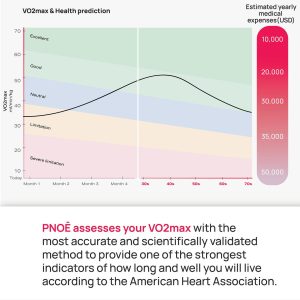
Are you a FIT and ACTIVE individual… but still feel fat, slow and puffy?
Let’s test and assess if you are actually FIT and HEALTHY from the inside out by running specific functional lab tests, comprehensive blood chemistry analysis (in functional ranges -not the “normal” ranges based on unhealthy people), metabolism testing at rest and during various exercise intensities plus nutritional therapy signs and symptoms assessment with a 3-day FOOD & MOOD log to learn more about the WHOLE you on the inside and out!
Debbie Potts is a seasoned figure in the health and fitness industry with over 25 years of experience. As a former endurance athlete and coach, she’s been recognized as one of the top trainers in the U.S. Her journey from athlete to holistic health advocate led her to create “The WHOLESTIC Method,” focusing on personalized wellness. Debbie is also a host, author, and speaker, sharing her expertise through “The Fit & Healthy Athlete Podcast.” With a mission to transform lives, she helps individuals uncover hidden stressors and optimize their health and performance. Visit www.debbiepotts.net to learn more about her transformative approach.
The Aging Athlete & Metabolic slowdown and why you should care about it.
- You have undoubtedly heard of the term metabolism.
- Although most people don’t know what it means, it is often the culprit for failed weight loss attempts or general inability to achieve a fitness goal.
- This blog explains what metabolism is, why it’s important to maintain it at high levels, and what can cause it to decline.
What is metabolism?
- Metabolism includes all biological processes that convert fuel from nutrients like fats and carbohydrates into the energy our body needs to survive.
- This energy is what we refer to as calories.
- In simple terms, it’s the process through which we burn calories.
- It is the most vital biological process since it provides a constant supply of the energy needed to power your body movements and all functions keeping you alive such as breathing, blood circulation, cell growth, muscle reparation, etc.
- Metabolism differs significantly from one person to another because of age, genetics, exercise habits, nutrition preferences, medication, etc.
Why it’s important to have a high metabolism.
- A high metabolism means your body burns more calories than the average person with the same age, weight, height, and gender.
- Conversely, having a slow metabolism means you are burning fewer calories than the norm.
- Since weight loss requires a caloric deficit, the state when you eat fewer calories than you burn, having a high metabolism is the most powerful protection against obesity.
- However, besides protecting you from weight gain, having a high metabolism is associated with faster cellular and muscle tissue reparation and other healing processes vital to recovery after training.
- Therefore, a high metabolism is also essential for avoiding injuries.

What can cause my metabolism to slowdown?
- Aging, nutrition, and training are the most potent drivers of your metabolism and can all lead to a metabolic decline. Here’s how each one can affect it.
Age:
- Aging will cause your metabolism to decline since the older we get, the harder it is to maintain muscles mass and the less metabolism-boosting hormones (e.g., growth hormone) we secrete.
- The metabolic decline caused by aging is much less acute than the one nutrition or training can cause, and in most cases, it’s responsible for only a small portion of a person’s weight gain.
- Moreover, despite the decline it causes, training and exercise can help reverse it and maintain your metabolism at healthy levels.
Nutrition:
- Nutrition is one of the most powerful drivers of your metabolism.
- When you reduce the calories you consume and enter into a calorie deficit, the state in which you burn more calories than you eat, your body will reduce its metabolic activities in two ways.
- First, it sheds muscle mass.
- This process occurs since muscles are one of your primary energy reserves that will be tapped upon to cover the calorie deficit caused by food restriction.
- Second, it makes your remaining muscle mass more economical, causing it to burn fewer calories when moving (e.g., walking).
- This is done by changing the balance of specific hormones that regulate the energy your cells burn during movement.
- Both processes are part of your body’s survival mechanism and kick in to conserve calories and help you close the energy deficit caused by restricting food intake.
- However, both can be averted with the correct dose and type of exercise.

Training:
- Training can affect your metabolism in the fastest and most acute way.
- Although it can be a powerful tool for increasing your metabolism, over-training can have the opposite effect.
- The most effective workout type for increasing your metabolism is resistance training.
- First, it increases your muscle mass, leading to more calorie burn as more active tissue requires more energy.
- Second, it increases the energy your muscles burn on a per unit basis, meaning that every pound of muscle mass starts to burn more due to a positive shift in the hormone balance regulating your cells’ energy consumption.
- Too much training, however, has been shown to cause an adverse change in hormone balance (e.g., reduction of growth hormone secretion) that reduces metabolic processes.
- In this case, metabolic decline and the associated decrease in recovery capacity pose a critical danger for injuries.

Summary of avoiding the Metabolic Slowdown as we age!
- A metabolic slowdown can pose a severe obstacle in achieving your dream physique and staying healthy long-term.
- As a result, one of the most important things to monitor is whether your metabolism has slowed down or whether your current fitness and nutrition are causing it to decline.
- The PNOE metabolic analyzer provides a clinical-grade analysis of your metabolism, helping you act early and avoid the pitfalls of a metabolic slowdown.

- Contact Coach Debbie Potts to get your PNOE metabolism test and Nutritional Therapy Assessment today at debbiepotts.net
Why Breath Analysis?
The history of Breath analysis:
Why Breath Analysis matters?
Energy Intake:
Test and not guess if you are metabolically healthy as a FIT and ACTIVE aging athlete… don’t assume!
Coach Debbie Potts

